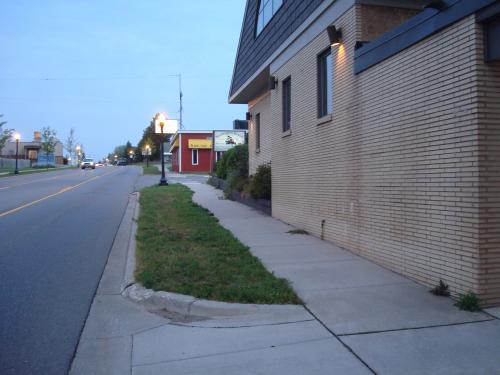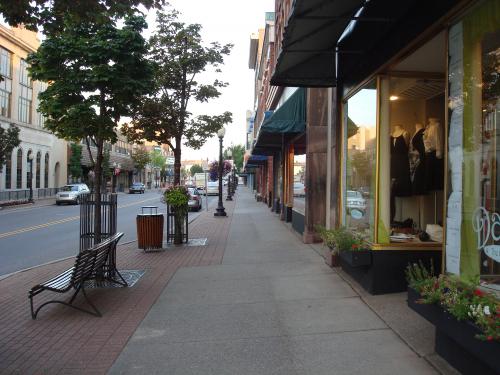Add a frontage quality analysis to your next walking audit
Conventional walking audits only assess municipal infrastructure like sidewalks and crosswalks. Since walkability is also dependent on how interesting the walk is, conduct a frontage quality analysis for a more robust assessment of walkability.
As identified in the Michigan State University Extension news article Good urban form promotes walkability and physical health, walkability is a function of how appealing the route is. Known for short as walk appeal, the idea is that walkability is not so much about providing sidewalks as it is about ensuring there are interesting, comforting, and socially inviting facades along the way. Why is then that conventional analyses of community walkability – the walking audit – focus solely on gaps in the sidewalk infrastructure and safer ways to cross the street?
In addition to considering the public infrastructure that contributes (partly) to walkability, another tool is emerging that takes a more encompassing analysis of what it takes to get people to feel motivated to walk for short trips. This tool is called the frontage quality analysis.
Consider the building frontages along your downtown, neighborhood business district, or urban center streets. Assuming there are sidewalks and crosswalks in place, are most frontages consistent with good urban form identified in the MSU Extension news article Putting up a good front? If not, you probably don’t see too many people patronizing those businesses on foot. Take an approach like that used by Independence, MO in the Independence Square Revitalization Plan. As the plan details in the text, areas of Good frontage quality typically have buildings close to the street, storefront windows and doors readily accessible to the passerby, and awnings, lighting and other amenities that help to create a positive pedestrian experience. Poor quality frontage is where buildings have deep setbacks, blank walls or boarded window and door openings, parking lots facing the street, and/or the presence of other barriers that discourage pedestrian activity.
Photo: Poor frontage quality for promoting walkability in Marquette, Mich. Credit: Brad Neumann
Of course, frontage quality is difficult for a municipality to influence in a short span of time. Most buildings are privately owned and the principal way to affect frontage quality is through implementation of a form-based code that has frontage standards related to building placement and fenestration (see MSU Extension news article Form-based zoning becoming popular for its difference from conventional zoning). Still, other opportunities to influence the quality of building frontages exist and the community could pursue becoming a Main Street Community or pursuing grants to help building owners implement façade improvements through Michigan’s Redevelopment Ready Communities program.
Photo: Good frontage quality for promoting walkability in Marquette, Mich. Credit: Brad Neumann
Often it is a small number of vacant lots that reduce the walk appeal of a district and municipalities can put on the developer’s hat to promote redevelopment in a way that makes the area more safe, comfortable, and interesting to walk. That might be through brownfield remediation, relaxation of standards to make redevelopment in the district more lucrative, or sponsoring a charrette to stimulate ideas and developer interest. Through redevelopment of one or two key sites along an otherwise walkable corridor, the walk appeal of the whole district will be improved.
In conclusion, expand your walking audit to include a frontage quality analysis. It will help you identify key locations with low walk appeal where a targeted investment or public-private partnership to improve the building frontages will improve walkability far beyond that achieved by the installation of a sidewalk or street trees.



 Print
Print Email
Email




